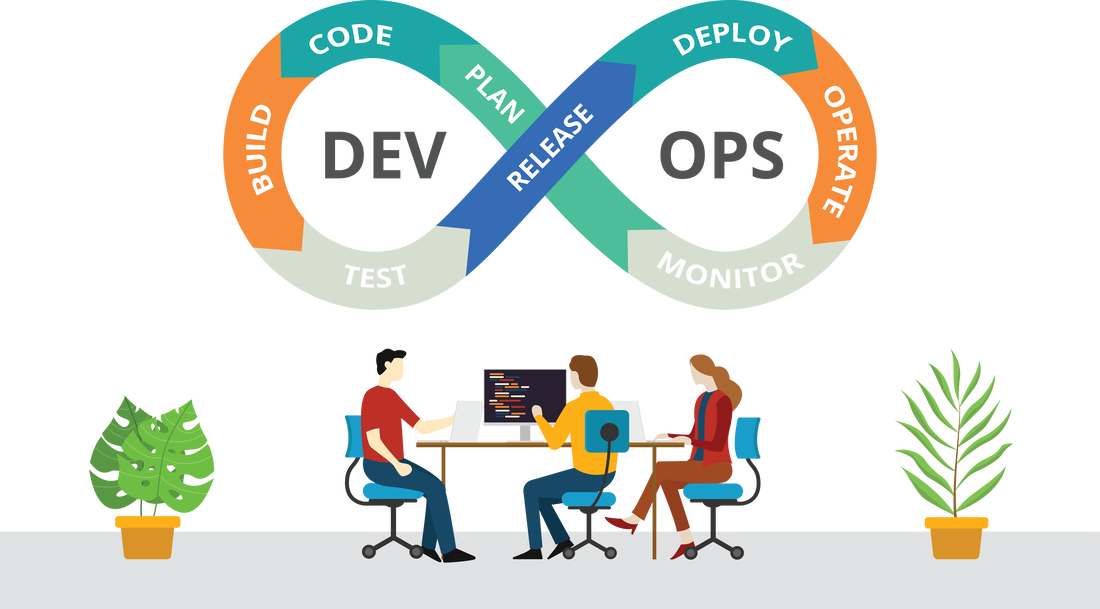|
Before the advent of DevOps, software development was carried out using different methodologies. Among them, Waterfall and Agile methodologies were the most prevalent. Let's have a look at how DevOps has revolutionized the world of technology development. Waterfall & Agile Methodologies Waterfall model is one of the oldest methodologies to have been employed. It follows a sequential approach, i.e. each stage depends on information from the previous stage. In other words, this model follows a top-down approach. Rigidity is the major downside of the Waterfall model. This model is not viable if the project needs flexibility or if the project is long term and requires ongoing changes. However in Agile methodology, the approach is iterative. Agile methodology promotes continuous iteration of development and testing throughout SDLC. Design and testing activities happen simultaneously, unlike in Waterfall model. But in Agile, we create an ongoing release, each featuring small, incremental changes to the previous version. At every iteration, the project is tested. It helps to understand and identify minor issues at an early stage to avoid major issues as the project progresses. DevOps Though Agile methodology brought agility to development, it failed to bring agility to the operations. This was addressed by the DevOps Methodology. In the DevOps model, development and operation teams work together closely as one team. DevOps helps us to simplify both the development and deployment processes. Automation is the key to DevOps. It configures continuous integration, continuous delivery and continuous deployment in the release cycle. DevOps helps in team collaboration, reduction in failures/rollbacks and also provides scope for continuous improvement. Stages in DevOps:
DevOps Lifecycle Continuous Development Continuous development involves constant planning, outlining and coding of the software/application. The main aim is to optimize the process of code-building and to reduce the time between development and deployment. Jira is an Agile-friendly planning tool. Multiple developers working on the same application can write the code in various languages. Maintaining a centralized code is called Source Code Management. Version control tools manage the code. Git, SVN, CVS, Mercurial are the most popular tools used for maintaining centralized code. Github, Gitlab, Bitbucket are few companies that provide cloud hosting for software development version control using Git. Continuous Testing Testing is the critical task of any development process. In DevOps, test cases are auto executed and build processes are validated. When a code is built in Jenkins, this will directly reflect in the testing environment. The testing team performs testing, and if an issue arises, it will be redirected to the developers who committed that change. For automation testing, tools like Selenium, JUnit and few others are available. Continuous Integration Continuous Integration is another critical stage in DevOps lifecycle. Whenever a commit happens in the code in Git, this practice will build the application and allow for early detection of problems. Code building here involves not only compilation but also unit testing, code review, integration testing and packaging. Jenkins is one of the most popular continuous integration tools available in the market. Whenever there is a change in the Git repository, Jenkins fetches the updated code, and it prepares a build of that code which is an executable file in the form of a war or a jar. This build is then forwarded to the test server or the production server. Continuous Deployment In this stage, deployments will happen in respective phases. After validating and testing the build artefact, the environment auto starts the deployment on the respective platforms using a continuous delivery process. But for deploying in a production environment, authentication is mandatory. The above-stated process is entirely automated. Continuous Monitoring After the deployment on the production environment, we must operate the whole system and monitor the application. We monitor the performance of the software and even check the system errors like low memory, server down, server load etc. We are not only monitoring the performance but also the functionality of the software. During this phase, network issues get resolved. Operations team looks for user activities and improper behavior of the application. Nagios is a popular monitoring tool used in DevOps for continuous monitoring. All the phases mentioned above are carried in a continuous loop until the desired quality is achieved. Previously, OTT platforms and eCommerce giants mainly used DevOps because of their continuous deployments. But now most of the companies are using DevOps for quality and flexibility reasons. The above stages are a glimpse of how DevOps methodology has revamped the software development life cycle (SDLC). Organizations these days are trying to incorporate DevOps into their IT processes and systems to get an edge over the competition before it becomes the new normal. At H-Town Technologies, we help you identify the technologies that ensure continuous integration, continuous delivery and continuous deployment to build end-to-end infrastructure ensuring faster time to market and drastic decrease in costs. Along with this, we also offer numerous solutions to get beyond standard DevOps capabilities to deliver prompt IT solutions customized for organizations. To ensure efficiency, we do continuous auditing for the software or website even after it is launched.
23 Comments
MOHIT KUMAR
8/4/2021 15:38:52
Nice blog, thank for writing this.
Reply
Aakash
8/4/2021 15:59:04
Great work! Well presented.
Reply
Vardhana
8/4/2021 15:56:13
Good content
Reply
Shk
8/4/2021 16:05:52
Good one!
Reply
Craig H.
8/4/2021 16:35:11
Love it! DevOps market is sure to develop a lot more when everyone in IT understand its importance.
Reply
15/6/2021 07:39:41
Thanks for the info. DevOps has been very critical for enterprises to stay competitive.
Reply
25/11/2021 04:21:41
All the information mention here is clear and easy to understand this is helpfull to everyone to enhancing the knowledge keep on posting like this thanks
Reply
24/8/2022 08:41:22
I read this article, it’s clear, concise and complete. I like the way you are working. You are really showing that dedication of the work. You select an interesting topic seeing a different point of view and make this easy to understand for readers.
Reply
11/11/2022 06:22:11
Microsoft Power BI: Produce Powerful Reports & Dashboards
Reply
Thanks a bunch for sharing this with all of us you actually know what you are talking about! Bookmarked. Please also visit my site.
Reply
10/3/2023 04:25:55
ITIL 4 is the latest version of the Information Technology Infrastructure Library (ITIL) framework, which provides best practices for IT service management. If you are interested in getting ITIL 4 certification training, there are several options available to you:
Reply
4/6/2023 05:26:05
Great post. keep sharing such a worthy information.
Reply
Very Nice Post and its informative! Thank you for sharing this pretty post, it was very good to read and useful to improve my knowledge as updated one, keep blogging.
Reply
Druthi
26/4/2024 07:32:08
Thank you for sharing your knowledge and expertise through your blog post. Your ability to explain complex concepts in simple terms was commendable. To learn more, <a href="https://jvz5.com/c/3116705/397573" target="_blank">click here</a>.
Reply
Sudha
26/4/2024 07:33:38
Your post has provided me with a comprehensive understanding of the topic. Thank you for sharing your knowledge. To explore further, <a href="https://jvz2.com/c/3116705/404274" target="_blank">click here</a>.
Reply
Leave a Reply. |
Tech TalksStay up to date with the tech world and the latest trends in the industry. Archives
August 2021
Categories
All
|
|
H-Town Technologies Inc. is designed to
provide continuous and comprehensive support to all our clients in IT Consulting, Development and Managing their day-to- day business operations in the IT sector. |
|
COPYRIGHT © 2020. H-TOWN TECHNOLOGIES INC. ALL RIGHTS RESERVED.




 RSS Feed
RSS Feed
